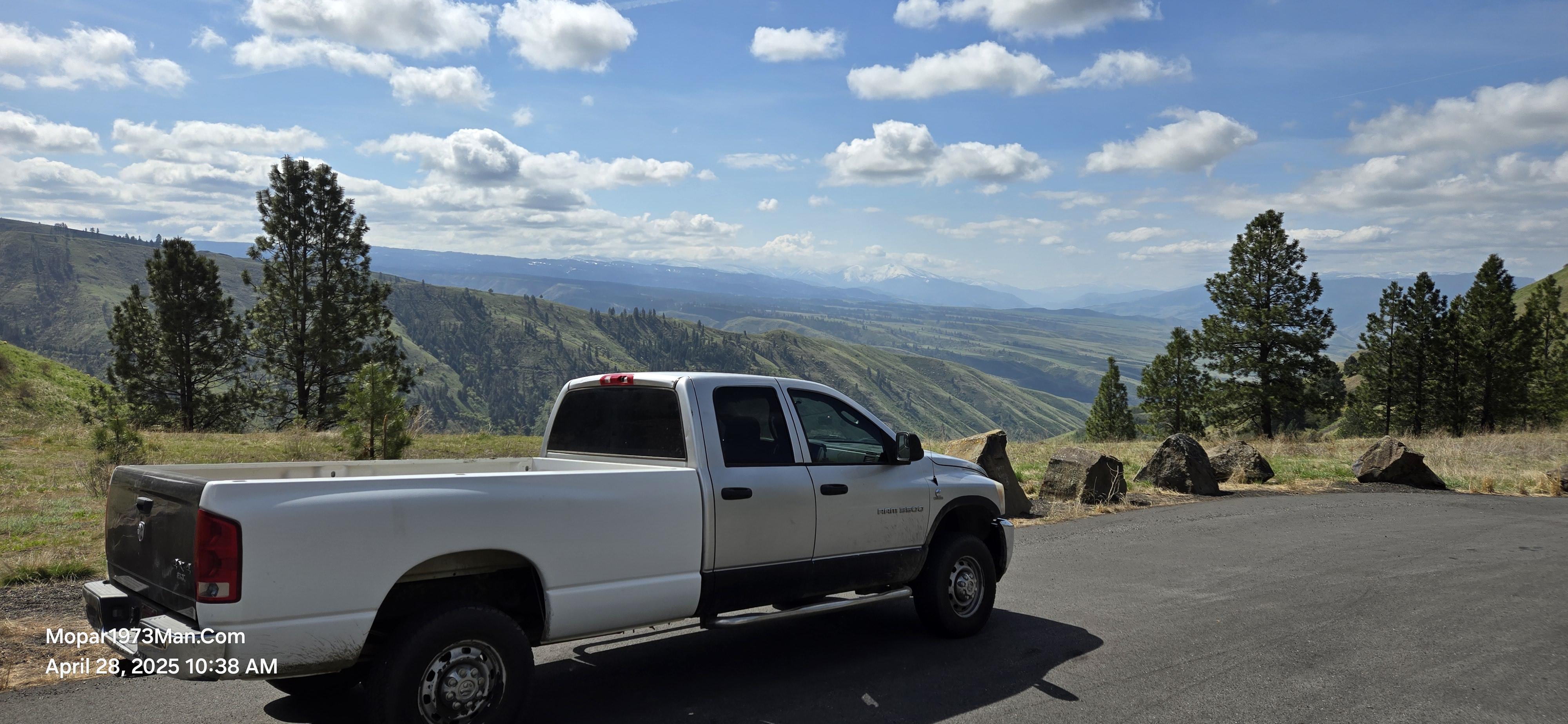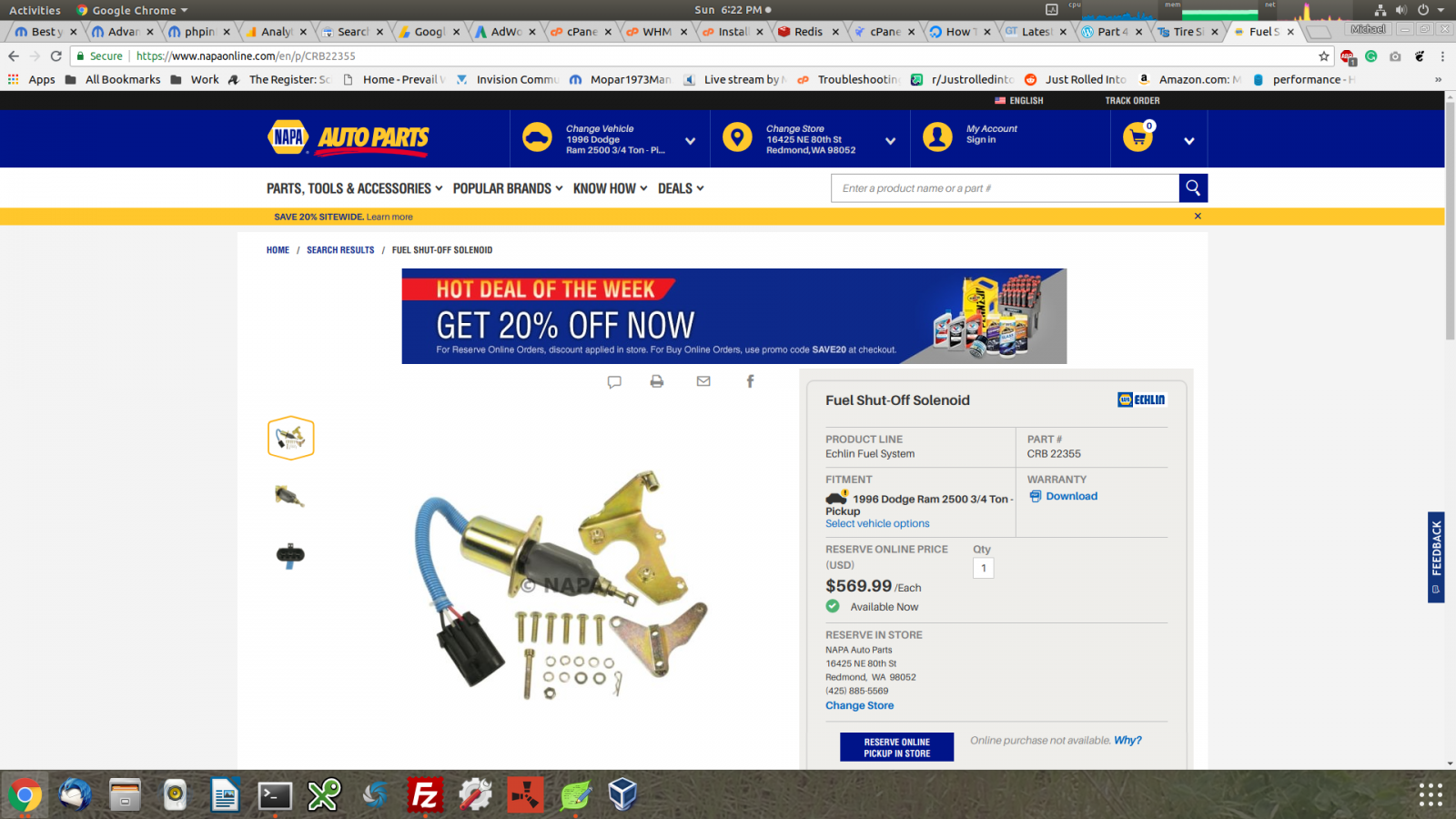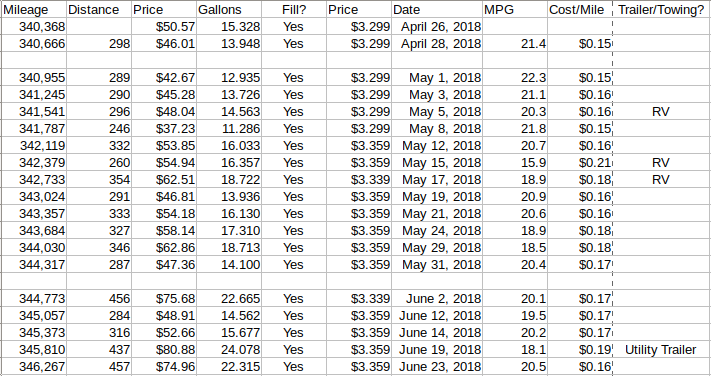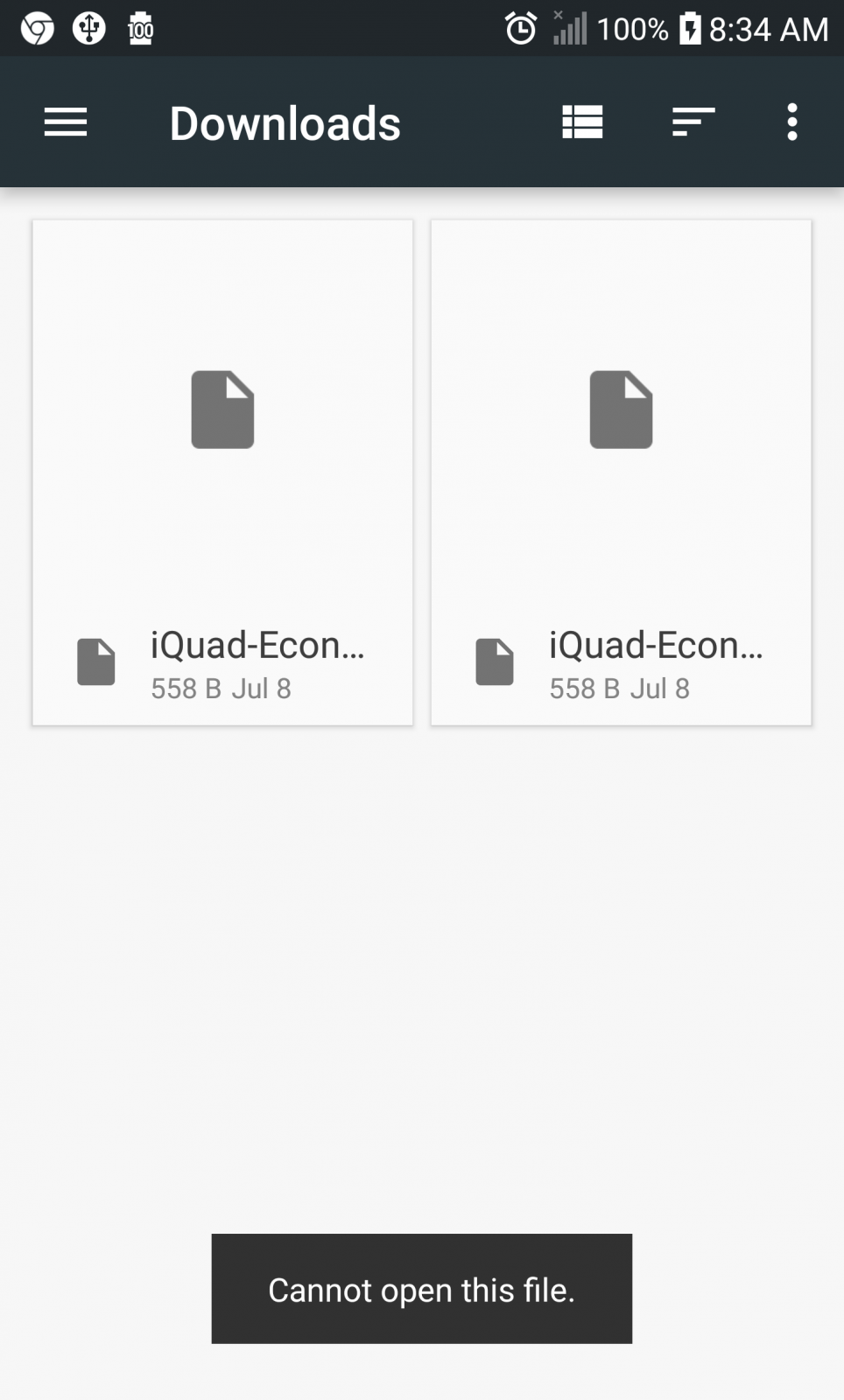
Mopar1973Man
Owner
-
Joined
-
Last visited
-
Currently
Viewing Topic: Flashing WTS light
Everything posted by Mopar1973Man
-
Good times and bad times.
Tip: A lot of people do realize that "Engine Load" is actually the amount of fuel commanded by the ECM.
-
Thought I would share a little carnage
I've dealt with pup's like this before. Last one I remember handling was an older Datsun truck and had carburetor issues. Once I got it started you could hear the connector rod banging away. I told him it was done. Nope, he was going to quit. Kept it running and knock got worse in a mere few second and locked up solid. Then he says he needs to get it running. I already warned him something was broke inside the engine hence why the starter couldn't twist the crank. I already knew the connector rod had broken free and jammed the crank. I told him I could drag start the truck. It actually did start. Running on 3 cylinders the connection rod was shoved there the block and left a fist-sized hole but it was running.
-
Hello from Idaho
- Best year of the 12 valve?
In other words. Intake range is 0.006 to 0.015" Typically set for 0.010" Exhaust range is 0.015 to 0.030" Typically set for 0.020" To find people that don't know how to properly use a feeler gauge.- This site rules! VGT troubleshooting
Few people I talk to typically are running the Smarty Touch and monitor the back pressure and see if the VGT is stuck or not. Smarty touch will report the back pressure if the VGT is stuck the drive pressure will get crazy high.- Inland empire Ca.
I know of @IBMobile- New Tire Size found 235's to 245's
245/75 R16 and 3.55 Gears, 0.75 (5th gear ratio). 65 MPH is 1960 RPM's 66 MPH is a perfect 2,000 RPM's. 80 MPH is 2,400 RPM's.- Fuel gauge fluctuations
LOL. I got one. I pulled a guy out of the backcountry because he thought he had enough fuel (3/8 of a tank) and forgot about the steep grade. As he ran up a steep grade in the backcountry the fuel ran to the back of the fuel tank engine died. Rolled back down the hill and could start again but couldn't make it over the grade without running out of fuel on the climb. I end up pulling him over the grade so he could get back to town 15 miles away.- Best year of the 12 valve?
I always loved the comment. But always loved when the 12V craps the bed and leaves them on the side of the road now you guessing. Did it run out of fuel? Is the lift pump pumping enough pressure? Did the fuel solenoid burn up? Is the fuel shutoff arm up or not? Is the p-pump timing still on or do the gear just slip? Did the fuel heater just fail and now sucking air? All these questions are my typical checklist for the broke down person along the road. The bad part is most people can't do anything about most of it. Like lift pump problems most people don't install a fuel pressure gauge on a 12V. Fuel solenoid typically a no-brainer but most people don't know it. Then people out here broke down don't have the luxury of waiting days for a quality fuel shutoff solenoid so they get raped by the local part store. Then have guys that think they know how to time the pump end up not getting the nut on tightening and having the gear slip and now stuck in the middle of nowhere.- Fuel gauge fluctuations
Larger the tire size, the lower the final ratio, and more engine load and lower fuel mileage. This is why I've been studying the 245's now. Dropping from 31" tires to 30" tires. I'm still debating in my mind of a 215/85 R16 (8.5") or 245/75 R16 (9.6") both are 30" tall. Where the 235/85 R16 (9.3") and 265/75 R16 (10.4") are 31" tall. All comes down to rotational mass and final gear ratio. Bigger tires do look cool but looking cool comes with a price tag. I've got to. Being the next diesel fuel station might be a very long ways away. Living on the east side of the island population density it much higher. Out here towns don't have to have a fuel station and some may or may not have fuel that day. It does happen. So being able to understand you remaining range you have left in gallons and miles is very helpful to know what your next step is being fuel might be another 100 miles to reach. Might be. I can tell you as the senders wear they typically hit empty higher on the gauge. So when mine failed I was hitting empty at 3/8 of a tank.- Fuel gauge fluctuations
In my past rigs I was really fussy about making sure the float arm just about touch the bottom of the tank. I wanted to know where EMPTY exactly was. I'm currently not happy with the current float setup. Fill it up and it sits on full for at least 100 miles and the starts to fall. Now my Quadzilla shows my consumed fuel in gallons and really close to being right on most of the time. By the time I hit Ontario on my return trip I'm normally close to 15 to 18 gallons used. I typically hit the half mark at about 17.5 to 18 gallons which is about right for 35 gallon fuel tank. (35 / 2 = 17.5 Gallons). When the fuel light comes on at the 1/8 of a tank I typically have 10-11 gallons left. So the span between 1/2 and 1/8 mark falls ball of lead chucked out in the lake. Personally, the 2nd gen cluster sucks for accuracy. Volt gauge once it hits 11.99 volts the gauge drops to 8 and chimes. It will not rise back up till there is 12.01 Volts again. Oil pressure gauge that changes to coolant temperatures. Coolant is pretty close to right.- Fuel gauge fluctuations
- Best year of the 12 valve?
I've got to ask why? Why are you willing to give up the 24V for 12V? All I can say is make sure you buy the tools for the p-pump. Timing is rather tough without the dial indicator. Then when there is issues there is no diagnostic port to help you. Yes, I know the 1996 and up have a port but there are no electronics on the engine to help you on diagnostics.- The Future of Trucks
Time will tell more. Right now after reading over many brands of EV's I found that right now I couldn't afford any of them.- Hydraulic Clutch Master And Slave Cylinders Replacement
A spongy clutch pedal is a sign of air in the system. You have to pull the entire system out ot bleed it. There is a large loop that is above the reservoir height so it common for air bubbles to hang in that loop. The only way to get them out is to remove it, hang the system, then bleed it. Highly suggest against the upgrade. Way too many people play with the adjust and hyperextend the throwout bearing past the pressure plate fingers trying to make up for poorly bleed clutch system with air.- 2 comments
- 1 review
-
-

- 1
-
- The Future of Trucks
Mind you that every vehicle I ever owned typically I ran upwards of 300k miles. 73 Dodge Charger I sold with 339k miles. 72 Dodge Power Wagon I traded in with 320k miles. 2002 Currently at 349k miles. I'm not a person to buy a vehicle for 50k to 100k miles and buy another vehicle. I run them long and hard.- The Future of Trucks
Just stumbled on those two videos. Umm... Buying a new battery isn't cheap for Telsa. Just like this small snip...- The Future of Trucks
This looks like a total PITA vehicle to work with.- EGT's
Good video I found over on Smarty Resource. I know the gent speaks of common rail and other diesels but good info.- New Member Checking In
Welcome to the family. All I can say is dive in with both feet. Start posting questions. There is no such thing as a dumb question. We don't ask you to go search first either.- 47re Overdrive discussion
Again talk to @Dynamic about the fluid and the requirements of the mods before doing a fluid type change.- New Tire Size found 235's to 245's
Link please I want to see this calc...- Fuel economy on iQuad
Google Drive... I sure wished the files were just saved directly to the SD card on the onboard memory of the device. When I manually uploaded the file to the SD card on my phone it works fine. Google Drive acts like the file doesn't exist but it does but Quadzilla can list it but not open it. Yeah, it shows up on the screen and can't import the tune. Again copy it to my little 16 GB SD card file works just fine and Quadzilla can see the edited file and imports like its suppose too. Never was a fan of exporting to cloud, download on the home PC, upload back to the cloud then import back into Quadzilla. Why not just save it to the storage of the device plug in the USB cable, edit directly on the device from the PC. Then just unplug the cord. Much simpler that all this uploading and downloading to make one file edit "1998.5 to 2002 Dodge" to "V2 Quadzilla Only".- New Tire Size found 235's to 245's
Actually, you want to optimize your RPM so your highway travel is around 1,900 to 2,000 RPM. Most of this comes from @cajflynn back in the day his old 2001 Dodge was a 3.73 ratio axle and towed like a dream. Then after see all the 3.55 geared truck and 37" tire troubles. Why I was not really messing with tire sizes. Now after a bit a experience and I'm jumping out to optimize the tires to gears to make the best setup. Remember bigger tires have more rolling resistance especially with 285mm wide face then with all the steel belt you going to have more rotational mass. Just be aware. @Marcus2000monster I would in your case follow my lead and find a pair of junk tires on the rear axle to play with first before committing on tire purchase. Like I could do a 215/85 R16 on my truck my problem is I will most likely overwhelm the tires with the amount of torque I produce. So, on the Cummins I'll stick with 245/75 R16 which is a 1 wider than the 215's. I had to change my fuel map for daily driving the fuel comes on too quick and the tires lose the battle pretty fast.- Fuel economy on iQuad
Here is what I get... I've already uninstall and reinstalled the iQuad app... Nevermind something change now the import is working from the iQuad app where it didn't last night... - Best year of the 12 valve?







